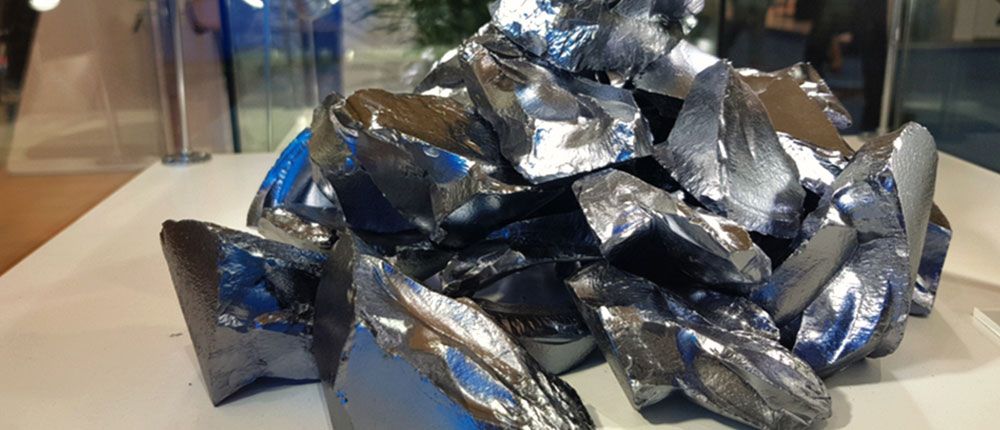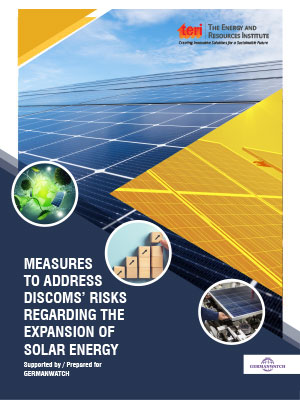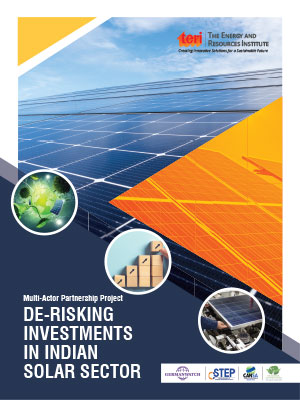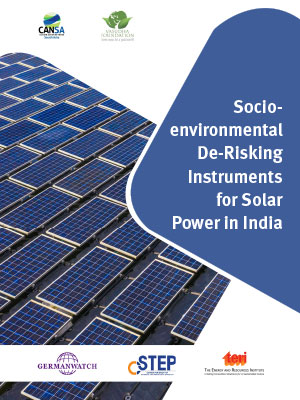De-Risking Investment in Solar Energy
The goal of this project to establish a trustful and effective cooperation between actors from civil society, research, the private sector and politics in a transformative multi-stakeholder partnership leading to a sharp increase in installation of renewable energy in India through de-risking solar investment. This encompasses mainly a study paper, national dialogue events or workshops and the development of policy papers.
Measures to addess DISCOM's risks regarding the expansion of solar energy
Authors: Mr Kapil Muddineni
The report focusses on the business model of the distribution companies (DISCOMS) and their risks with and potential benefits of India’s expansion of solar energy.
India has substantial potential for harnessing solar energy. India's solar target of 100 GW by 2022 is correspondingly ambitious and is on a progressive path for achieving appreciable solar figures till 2030. Foreign investment in the Indian solar sector holds significance to realize achievement of these targets. The project of Germanwatch and TERI with the further partners—CSTEP, Vasudha Foundation, and CANSA—tries to bring together actors from civil society, financial institutions, and government agencies, and research organisations in a multi-actor partnership to identify instruments for de-risking foreign solar investments in India. The present report focusses on the business model of the distribution companies (DISCOMS) and their risks with and potential benefits of India’s expansion of solar energy.
Multi-Actor Partnership Project: De-risking Investments in Indian Solar Sector
Authors: Mr. Arjun Shanker, CSTEP; Mr. N S Prasad, TERI
Multi-Actor Partnership (MAP) for De-risking Investments in Solar Energy in India - Review of financial risks affecting investors
As India looks at strengthening its solar energy capacity, inadequate financing poses a concern. The inadequacy results from low-performing assets, impending financial distress of electricity distribution companies (DISCOMs), market uncertainties over time, and black swan events, such as the COVID pandemic – all of which impact investor confidence. In this regard, the Multi-Actor Partnership (MAP) is a method to review barriers investors face across the solar energy sector. MAP brings in key stakeholders – government bodies, research and policy centres, financial institutions, and civil societies – to deliberate on the solar sector's underlying issues and frame potential de-risking solutions that could drive forth crucial policy decisions. The study curates critical financial risks – broadly under currency fluctuations, counterparty issues, and market volatilities - and de-risking measures presently available. Further, putting together the insights from several expert consultations, the study provides additional mechanisms to complement and strengthen the existing ones. The proposed recommendations are low-cost hedging alternatives, financial top-ups for small-scale solar developers, broader solar-centric insurance coverage, diversifying the investor pool through a regulated green financing platform, hybrid models for improving farmer revenues and overcoming power-purchase agreement-linked concerns. Each measure proposed would have specific MAP actors to implement it. Though requiring further investigation, these recommendations offer the potential to design a de-risking roadmap for planning India's long-term goal of clean energy financing.
Socio-environmental De-Risking Instruments for Solar Power in India
Authors: Mr. Santosh Kumar Patnaik, Program Coordinator, CAN South Asia; Mr Nakul Sharma, Program Coordinator, CAN South Asia
The study identified the need for a social and environmental impact assessment (SEIA)
The study Social and Environmental Impact Assessment (SEIA) process could be useful in many different ways. Firstly, it could be useful in identifying potential problem areas before the onset of project processes. India has placed wind and solar photovoltaic (PV) projects under 'White Category' industries, which are exempted from the EIA process. Socio-economic impact assessment usually forms an integral part of the EIA process. By doing away with any assessment, the real cost of promoting solar power are waived off. Secondly, land acquisition, rehabilitation, and relocation of project-affected population could be benefited from the SEIA process as these potential challenges would be identified and would need to be addressed by the developers. Thirdly, the environmental and social assessment could be instrumental in bringing out better social and environmental outcomes by helping in better designing of projects, which could have bearing on the economic outcomes of a project. Examples rank from water availability assessments to fair relocation of communities. Lastly, the SEIA process could enable promoters to conduct public consultations, which could provide them awareness of the opportunities and challenges in commissioning and running the project. Moreover, most international financial institutions require social and environmental impact assessment studies for funding. There are sustainable finance investors who require environmental and social standards clearances to invest heavily in sustainable projects. Thus, well-designed projects with detailed information on environmental and social standards are needed to attract the attention of the investors.
Full value chain solar PV manufacturing in India - TERI's recommendations
The paper recommends development of 15 GW full value chain solar manufacturing capacity in India by 2024

TERI has come up with a policy paper titled 'Solar PV Manufacturing in India: Silicon Ingot & Wafer PV Cell - PV Module' which suggests that India should take up full value chain solar manufacturing in a phased manner.
It's main recommendations are that the government should consider prioritising PV manufacturing value chain as a strategic industry and local manufacturing capacity of 15 GW of 'full value chain silicon ingot to solar modules' should be operational at competitive prices by 2024. For this it suggests initiating a Phased Manufacturing Programme (PMP), under the Make in India plan.
With a national goal of 1,00,000 MW of solar power by 2022 and continuing the growth trend beyond to be able to achieve 40% of non-fossil fuel power, creation of domestic manufacturing base assumes critical significance. Leveraging the size of domestic market is one of the key strategies adopted world over and China has used it to emerge as the global manufacturing hub for various articles including solar.
Government agencies have always played significant role in developing the market and establishing procurement strategies. The Government of India made a beginning to require bidders to use domestically manufactured solar PV modules in first ever solar bid of 150 MW, except for thin film and Concentrator PV technology in 2010. The stipulation was further strengthened in the second bid of 350 MW to require bidders to use only the domestically produced solar cells and modules. Recent bids by Solar Energy Corporation of India (SECI) too are linking setting up manufacturing capacity with assured Power Purchase Agreements (PPAs).
This paper takes an overview of global solar PV industry and its evolution, and compares Indian PV manufacturing with that of China before coming up with its set of recommendations.
The paper has been published under the Energy Transitions Commission (ETC) India programme.



